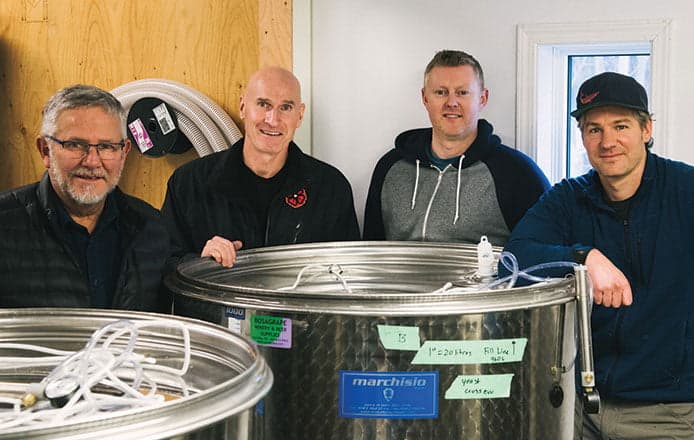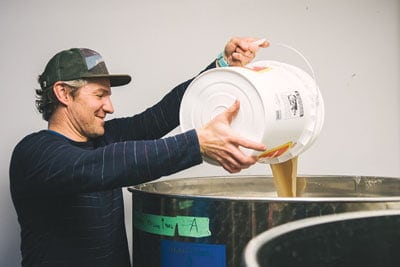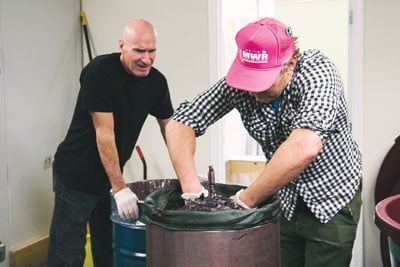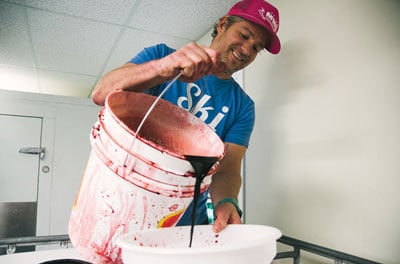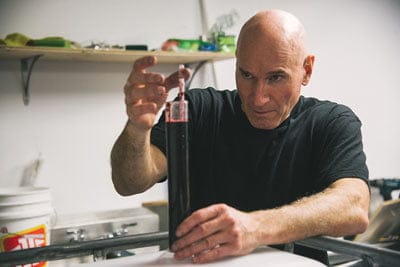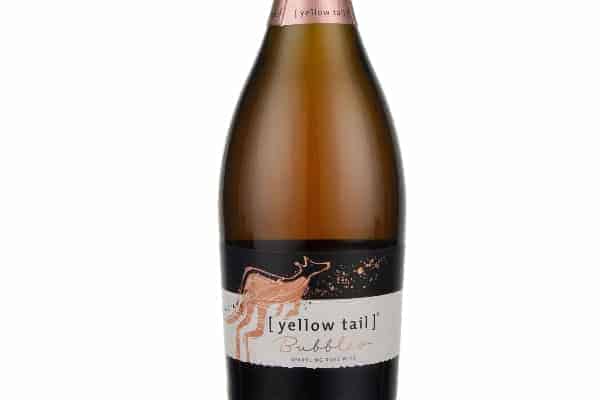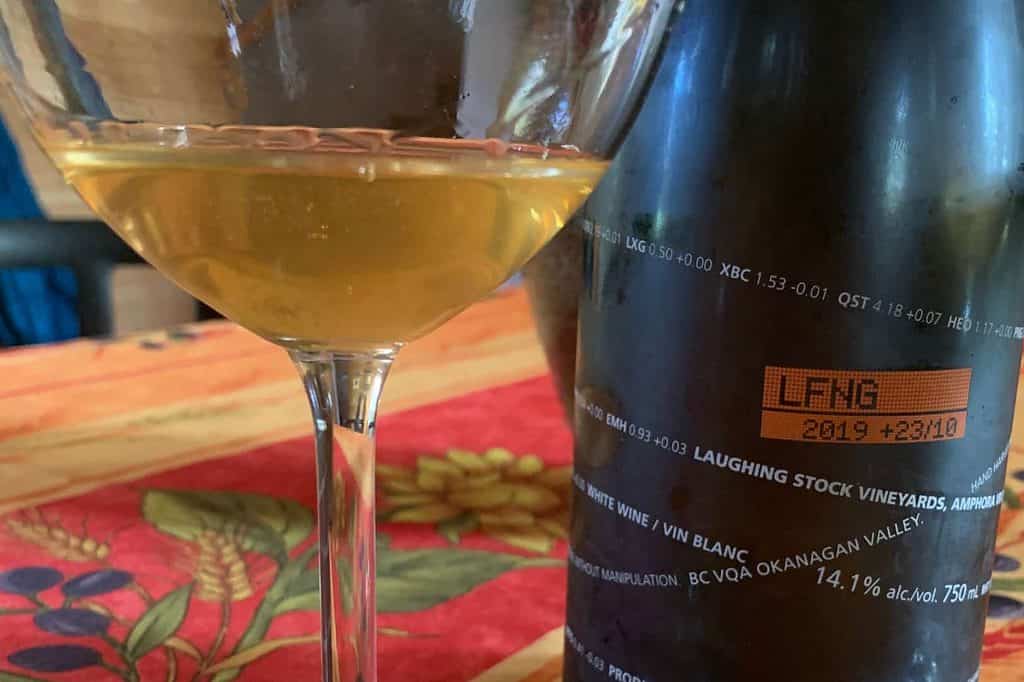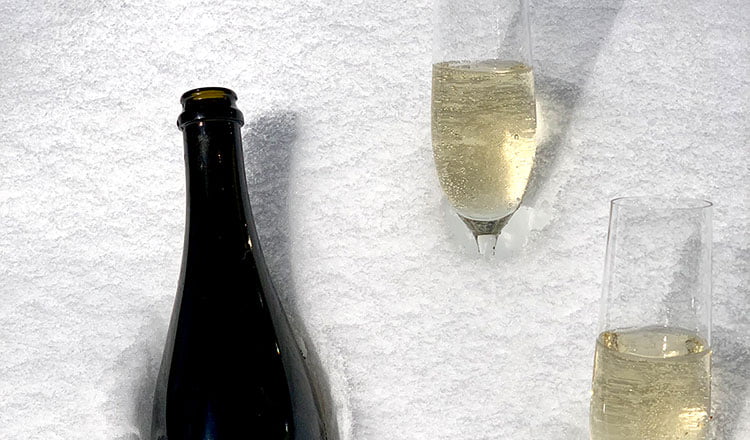[two_third]
You may have heard, we have a winery in the Yukon now. This winery comes from the team at Yukon Berry Farms. They were looking for a way to use their haskap berries to create secondary products that have a long shelf life and good margins – fruit wine.
This is a clever use of the berries to create a valuable secondary product, especially when targeting export into Japan.
The word ‘haskap’ is the Japanese word for Edible Blue Honeysuckle and in Japanese, it means ‘berry of long life and good vision.’ These berries are perceived very positively in Japanese culture and there is an eagerness in that market to enjoy these berries in a variety of ways as part of personal well-being. The owners of Yukon Berry Farms believe that these berries and the secondary products could become one of the Yukon’s most viable agricultural exports.
The fun is obvious; producing wine, spirits, cider, or beer are all interesting and fun industries to be part of. The winery is called Yukon Wines and their products are currently available, when they are not sold out, through Yukon Liquor Corporation.
Now, seriously, let’s get into the juice. Yukon Wines is producing three different varieties of fruit wine; Dry Haskap, Semi-sweet Haskap, and Semi-sweet Apple. When I completed the tasting on these wines, I did the haskap wines separately from the apple wine. Let’s talk haskap first.
Since these are fruit wines, I approached them as fruit wines. To me, this means bringing a playful curiosity to the experience instead of an expectation of what it ‘should’ taste like. First of all, I was delighted by the viscosity of the wine. Many fruit wines are very viscous, meaning they feel thick when drinking them. They can leave a sticky feeling in the mouth and lack a refreshing characteristic. Both the dry and semi-dry haskap wines flowed similarly to a glass of full-bodied red wine. Both wines have a nice balance of subtle tannin, juicy acidity, and sweetness to make these wines extremely food-friendly.
I brought these wines to the table with curry, salads with fruit, sweet & salty sandwiches, mushroom bolognese on pasta, and a Mexican burrito bowl. Honestly, I chose a number of very difficult food-pairings to zero in on where these wines would shine. The characteristics of the wines are so food-friendly that you could honestly bring this to almost any meal or snack and have an enjoyable experience.
Try playing around with the service temperature as well. I tried the wines at room temperature and slightly chilled. Most people’s ability to taste sweetness decreases with a drop in temperature. If the wine is too sweet for your taste at room temperature, try it again chilled. I especially enjoyed the Haskap Dry wine with my favorite sandwich that is inspired by The Green Olive Cafe in Squamish, BC. It is hummus, arugula, figs and green olives on a ciabatta bun. It is tasty as a homemade sandwich and magical if you have the chance to get it from The Green Olive. Having a rich-colored wine taste amazing with this unique little sandwich was absolutely delightful.
For my personal taste profile, I enjoyed the Haskap Dry with more foods and more on its own. When you decide to explore these wines, I recommend picking up both and trying them side-by-side to discover which you prefer. Also, I encourage you to try these wines with a spirit of discovery by having a variety of snacks or foods available to taste the wine with.
The Semi-sweet Apple wine looks like a bottle of white wine and has been created in the spirit of Chardonnay. A popular perception of chardonnay is that it is very oaky and this may have some people disinterested in trying this wine. Compared to that chardonnay perception, this wine almost couldn’t be further from the stereotype. When smelling the wine, the dominant scent is definitely apple, not oak. This wine smells sweet and tastes sweet. The oak used in making this wine is very subtle and may not be detectable by many tasters. I would recommend this to someone who was curious about trying something new and typically chooses a sweeter drink. Drinkers who would more commonly choose a cooler or semi-sweet cocktail may discover the combo of fruitiness and sweetness in this wine to suit their taste in a fun new way.
[/two_third]
[one_third_last]
The team has also recently launched Solstice Ciderworks, creating ciders from Okanagan apples. They are offering three varieties of cider: Dry Apple Cider, Haskap Cider, and Raspberry Cider. A nice touch they have incorporated into the cider cans is featuring artwork from youth artists in the Yukon. I have not sampled the cider yet but it is on my to-do list.
[/one_third_last]

